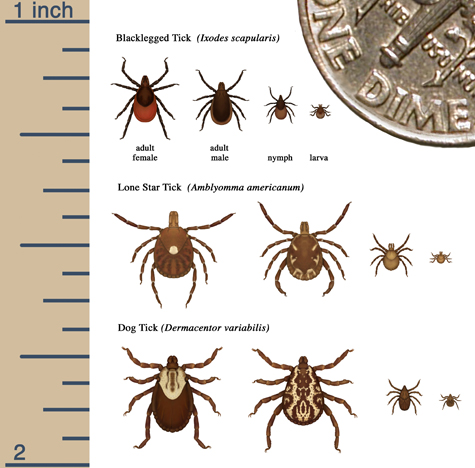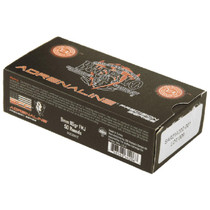Ohio's Exploding Tick Population and Lyme Disease
Posted by Fin Feather Fur Outfitters on May 16th 2022

Most of us can remember when ticks did not exist or existed in such low numbers, we paid no attention. Not paying attention to ticks today can lead to serious long term health issues and possibly even death in the form of Lyme’s disease. It is important to note that in 2021 there were 584 cases of Lyme disease reported here in Ohio up from 270 cases in 2017. Nationwide there are approximately 500,000 cases reported each year and most are clustered in the Northeastern United States. There are currently about 1.5 million Americans suffering from Lyme Disease of which 58% are unemployed.

The first case of Lyme disease occurred in 1975 in Lyme Connecticut. In 1989 Ohio discovered Lyme carrying Black
Legged ticks. From
1989 until 2008 Black Legged ticks accounted for less than 1% of all ticks
collected by the state’s health department. A 2010 study conducted by the State of
Ohio in Coshocton County confirmed a large quantity of Black Legged ticks.
Since then, they are now in 77 of our 88 counties. A pregnant female tick
typically lays around 2000 eggs.
So considering that many of us spend time in the outdoors partaking in
activities from simple walks to hunting we need to be aware of species of Lyme
carrying ticks in Ohio, proper protection and how to properly remove ticks.
SPECIES OF TICKS
There are 3 species of ticks here in Ohio that can transmit Lyme’s disease with
the Black Legged tick (deer tick) being the most likely to cause Lyme disease.
The other two types are the American dog tick and the Lonestar tick. The
Lonestar tick was first identified in the USA in 2017 and the female can lay
eggs and reproduce without mating. Dog ticks will most likely be found in
grassy areas and road edges. Blacklegged ticks and Lonestar ticks are usually
found in the woods and forested areas.

PROPER PROTECTION
Follow the steps below to minimize your chances of becoming a statistic.
- Before venturing into tick territory tuck your shirt in your pants and tuck your pants into your socks and boots.
- Spray down all your clothing with tick repellant containing permethrin and DEET. Allow to dry before going afield. Permethrin will not stain and is odorless. DEET repels ticks and permethrin immobilizes ticks.
- Use pet approved tick repellants on fido if he is venturing out with you. Check with your veterinarian regarding vaccines for your pet.
- Check yourself periodically as you venture about removing any ticks as quickly as possible
- Shower as soon as possible upon returning home. Check for ticks under the armpits, behind the knees, ears, in the hair, and in the groin.
- Tumble clothes in a dryer on high heat for 10 minutes to kill ticks on dry clothing after you come indoors. If the clothes are damp, additional time may be needed.
REMOVAL OF TICKS
Do not panic if you are bit
by a tick. Using tweezers carefully remove the tick making sure to remove
mouthparts. For the disease to be transmitted the CDC states the tick needs to
be attached for 36-48 hours although there is evidence transmission can occur
much sooner. If you are bit by a tick monitor your health carefully
for the next several weeks and if there are any issues consult with a medical
expert immediately.
BOTTOM LINE
Keep enjoying all your outdoor activites but be vigilant and follow the preventive steps above. Pay special attention to children and pets!
VENTURE OUT

















